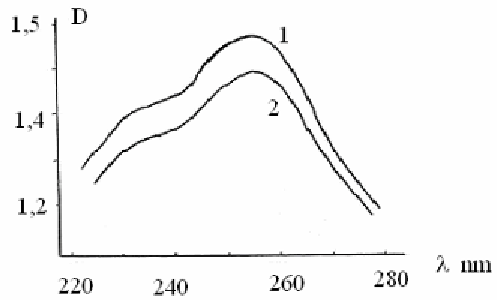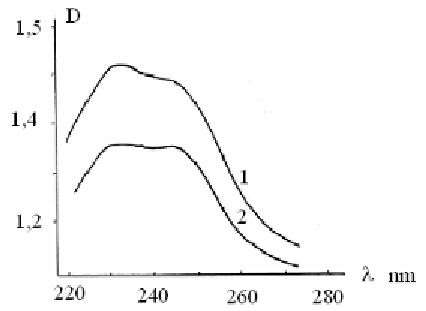Chemistry Reference
In-Depth Information
As it is seen from Table 21 all indan - sulphonamides facilitate CDA photo stabilization.
It may be noted that, with some exception, introduction of different substituents into indan -
sulphonamides greatly influences their stabilizing activity.
In the case of amino- indan - sulphonamides XIV and XX there is observed sharp
difference in light protection effect (24,6 and 62,6% respectively), though these compounds
are distinguished only by presence of methyl group, linked with nitrogen of sulphamid bridge.
This difference is well described by ultra-violet spectra of stabilized CDA-films non-
irradiated and irradiated during 24 hours (Figure 2.31 -2.32.).
Indan - sulphonamide XX has maximum absorption at 256 nm, whereas compound
XIV - at 232 nm, which demonstrates stronger effect of conjugation in XX. Besides, in
irradiated CDA-film the ratio of absorption intensity to the initial value at corresponding λ
max
in compound XIV is 0,68, whereas in XX this ratio is 0,86. It shows that stabilizer XIV
during irradiation is consumed 1,3 times faster than stabilizer XX. May be methylation of
nitrogen in sulphamid group stabilizes the structure, which, in its turn, increases intensity and
duration of light stabilizing effect.
Figure 2.31. U-v spectrum of absorption in CDA - films, containing 2% of ХХ indan sulphuryl amide
to polymer mass: 1- CDA - film before irradiation; 2-after 24 hours u-v - irradiation.
Figure 2.32. U-v spectrum of absorption in CDA - films, containing 2% of ХIV indan sulphuryl amide
to polymer mass: 1- CDA - film before irradiation; 2-after 24 hours u-v - irradiation.



Search WWH ::

Custom Search